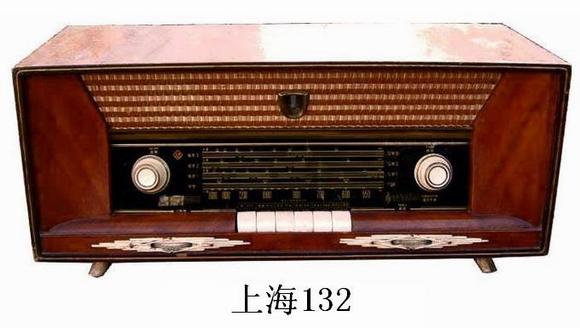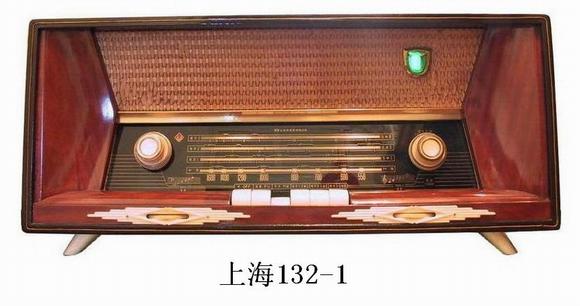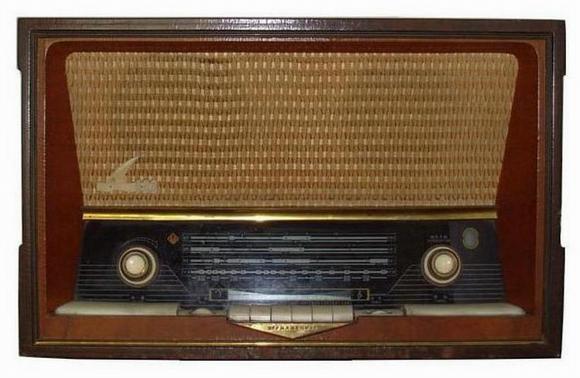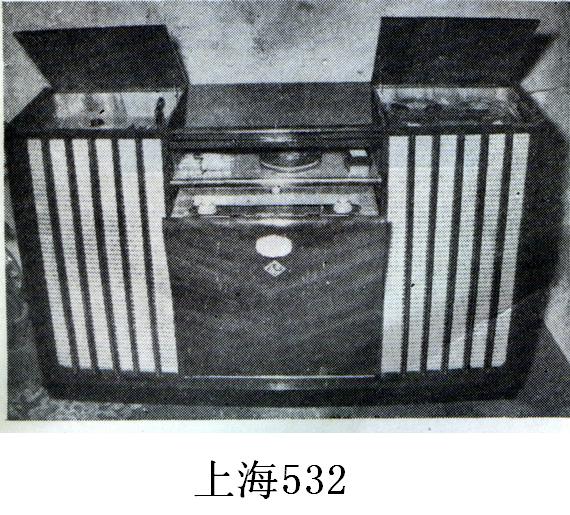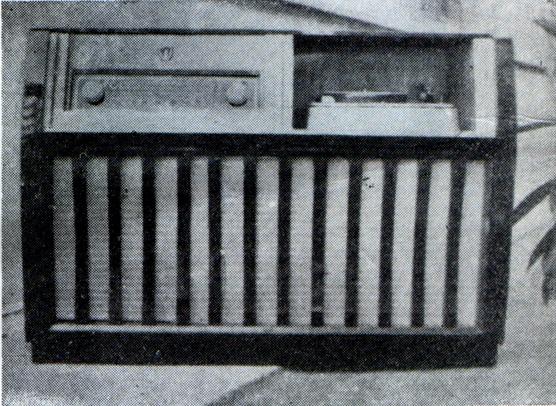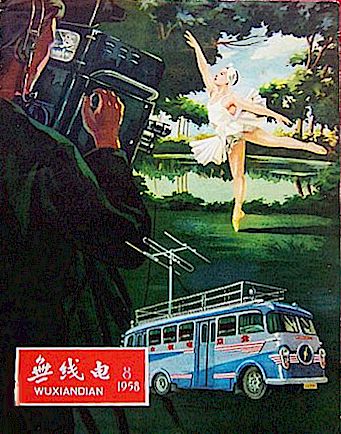
Liste des constructeurs People's Republic of China
| Fabricant | Nb de modèles | Modèles avec | Total | ||||||||||
|---|---|---|---|---|---|---|---|---|---|---|---|---|---|
| Total | <1930 | >1942 | |||||||||||
| 4 | 0 | 4 | 4 | 1 | 1 | 4 | 6 | 1 | 1 | |||||
| 2 | 0 | 2 | 1 | 2 | 4 | 1 | ||||||||
| 6 | 0 | 3 | 5 | 6 | 3 | |||||||||
| 1 | 0 | 1 | ||||||||||||
| 1 | 0 | 1 | 1 | 1 | 9 | 1 | ||||||||
| 2 | 0 | 2 | 2 | 1 | 8 | 2 | ||||||||
| 1 | 0 | 1 | 1 | 1 | 2 | 1 | ||||||||
| 1 | 0 | 1 | 1 | 1 | 3 | 1 | ||||||||
| 1 | 0 | 1 | 1 | 2 | ||||||||||
| 2 | 0 | 2 | 2 | 1 | 1 | 2 | 8 | 1 | 1 | |||||
| 9 | 0 | 9 | 7 | 7 | 6 | 9 | 10 | 15 | 2 | |||||
| 3 | 0 | 3 | 3 | 3 | 3 | 3 | 3 | 8 | 2 | |||||
| 3 | 0 | 3 | 1 | 2 | 1 | 3 | 1 | 6 | 2 | |||||
| 3 | 0 | 3 | 1 | 1 | 2 | 1 | 1 | 1 | 2 | |||||
| 27 | 0 | 27 | 27 | 26 | 26 | 26 | 2 | 31 | 77 | 2 | ||||
| 20 | 0 | 20 | 15 | 18 | 15 | 2 | 18 | 54 | 57 | 2 | ||||
| 1 | 0 | 1 | 1 | 1 | 1 | 1 | 1 | 2 | 2 | |||||
| 6 | 0 | 6 | 3 | 6 | 3 | 6 | 3 | 17 | 2 | |||||
| 1 | 0 | 1 | 1 | 1 | 1 | 1 | 1 | 3 | 2 | |||||
| 1 | 0 | 1 | 1 | 1 | 1 | 1 | 1 | 3 | 2 | |||||
| 3 | 0 | 3 | 1 | 3 | 1 | 3 | 1 | 5 | 2 | |||||
| 1 | 0 | 1 | 1 | 1 | 4 | 2 | ||||||||
| 1 | 0 | 1 | 1 | 1 | 4 | 1 | ||||||||
| 1 | 0 | 1 | 1 | 1 | 1 | 1 | 1 | 4 | 3 | |||||
| 7 | 0 | 7 | 1 | 7 | 1 | 7 | 1 | 9 | 2 | |||||
| 4 | 0 | 4 | 3 | 3 | 3 | 3 | 3 | 8 | 2 | |||||
| 1 | 0 | 1 | 1 | 1 | 2 | 1 | ||||||||
| 1 | 0 | 1 | 1 | 1 | 1 | 2 | ||||||||
| 5 | 0 | 5 | 1 | 1 | 1 | 5 | 1 | 4 | 2 | |||||
| 1 | 0 | 1 | 1 | 1 | 1 | 2 | ||||||||
| 2 | 0 | 2 | 2 | 2 | 2 | 2 | ||||||||
| 1 | 0 | 1 | 1 | 1 | 1 | 1 | 1 | 2 | 2 | |||||
| 2 | 0 | 2 | 2 | 1 | 2 | 1 | ||||||||
| 2 | 0 | 2 | 2 | 2 | 6 | 1 | ||||||||
| 12 | 0 | 12 | 12 | 8 | 8 | 9 | 109 | 53 | 2 | |||||
| 1 | 0 | 1 | 1 | 1 | 5 | 1 | ||||||||
| 5 | 0 | 5 | 5 | 5 | 5 | 3 | 64 | 53 | 3 | |||||
| 5 | 0 | 5 | 4 | 5 | 33 | 1 | ||||||||
| 3 | 0 | 3 | 3 | 3 | 3 | 2 | 32 | 14 | 1 | |||||
| 2 | 0 | 2 | 2 | 2 | 7 | 1 | ||||||||
| 1 | 0 | 1 | 1 | 1 | 1 | 1 | ||||||||
| 3 | 0 | 3 | 3 | 3 | 18 | 1 | ||||||||
| 14 | 0 | 14 | 12 | 1 | 1 | 7 | 54 | 1 | 1 | |||||
| 1 | 0 | 1 | 1 | 1 | 10 | 1 | ||||||||
| 4 | 0 | 4 | 2 | 4 | 2 | 1 | 3 | 4 | 6 | 2 | ||||
| 1 | 0 | 1 | 1 | 6 | 1 | |||||||||
| 2 | 0 | 2 | 2 | 2 | 2 | 2 | 10 | 16 | 2 | |||||
| 7 | 0 | 7 | 1 | 7 | 1 | 7 | 1 | 11 | 2 | |||||
| 1 | 0 | 1 | 1 | 1 | 1 | 1 | 1 | 3 | 2 | |||||
| 3 | 0 | 3 | 3 | 3 | 4 | 2 | ||||||||
| 16 | 0 | 16 | 8 | 14 | 6 | 1 | 15 | 20 | 26 | 2 | ||||
| 1 | 0 | 1 | 1 | 1 | 2 | |||||||||
| 4 | 0 | 4 | 4 | 4 | 4 | 4 | 4 | 14 | 2 | |||||
| 3 | 0 | 3 | 2 | 3 | 2 | 3 | 2 | 7 | 2 | |||||
| 1 | 0 | 1 | 1 | 1 | 5 | 1 | ||||||||
| 6 | 0 | 6 | 6 | 6 | 6 | 6 | 6 | 15 | 2 | |||||
| 8 | 0 | 8 | 3 | 8 | 3 | 8 | 4 | 15 | 2 | |||||
| 18 | 0 | 18 | 18 | 18 | 18 | 17 | 1 | 18 | 65 | 2 | ||||
| 5 | 0 | 5 | 5 | 5 | 5 | 5 | 38 | 12 | 1 | |||||
| 3 | 0 | 3 | 3 | 3 | 3 | 3 | 3 | 6 | 2 | |||||
| 1 | 0 | 1 | 1 | 1 | 3 | 2 | ||||||||
| 1 | 0 | 1 | 1 | 1 | 1 | 2 | ||||||||
| 1 | 0 | 1 | 1 | 1 | 1 | 2 | ||||||||
| 2 | 0 | 2 | 1 | 2 | 1 | 2 | 1 | 3 | 2 | |||||
| 2 | 0 | 2 | 2 | 2 | 2 | 2 | 2 | 4 | 2 | |||||
| 5 | 0 | 5 | 4 | 5 | 4 | 5 | 5 | 11 | 2 | |||||
| 10 | 0 | 10 | 10 | 10 | 10 | 10 | 10 | 22 | 2 | |||||
| 2 | 0 | 2 | 1 | 1 | 2 | 1 | 1 | 2 | ||||||
| 1 | 0 | 1 | 1 | 1 | 1 | 1 | ||||||||
| 1 | 0 | 1 | 1 | 1 | 1 | 1 | 1 | 3 | 2 | |||||
| 1 | 0 | 1 | 1 | 3 | 1 | |||||||||
| 2 | 0 | 2 | 2 | 2 | 17 | 1 | ||||||||
| 5 | 0 | 5 | 1 | 5 | 1 | 5 | 1 | 9 | 2 | |||||
| 2 | 0 | 2 | 2 | 2 | 2 | 2 | 2 | 4 | 2 | |||||
| 1 | 0 | 1 | 1 | 1 | 1 | 1 | 1 | 3 | 2 | |||||
| 1 | 0 | 1 | 1 | |||||||||||
| 1 | 0 | 1 | 1 | 1 | 2 | 2 | ||||||||
| 1 | 0 | 1 | 1 | 2 | ||||||||||
| 5 | 0 | 5 | 1 | 5 | 1 | 3 | 2 | 1 | 8 | 2 | ||||
| 1 | 0 | 1 | 1 | 1 | 1 | 2 | ||||||||
| 1 | 0 | 1 | 1 | 1 | 1 | 1 | 1 | 3 | 2 | |||||
| 1 | 0 | 1 | 1 | 2 | ||||||||||
| 2 | 0 | 2 | 2 | 2 | 2 | 2 | ||||||||
| 1 | 0 | 1 | 1 | 1 | 1 | 2 | ||||||||
| 1 | 0 | 1 | 1 | 1 | 1 | 2 | ||||||||
| 1 | 0 | 1 | 1 | 1 | 1 | 2 | ||||||||
| 1 | 0 | 1 | 1 | 1 | 1 | 1 | ||||||||
| 2 | 0 | 2 | 2 | 2 | 2 | 2 | 2 | 5 | 2 | |||||
| 3 | 0 | 3 | 1 | 3 | 1 | 3 | 1 | 6 | 2 | |||||
| 2 | 0 | 2 | 1 | 2 | 1 | 2 | 1 | 4 | 2 | |||||
| 5 | 0 | 5 | 5 | 5 | 5 | 5 | 5 | 12 | 2 | |||||
| 2 | 0 | 2 | 2 | 1 | 1 | 2 | 2 | |||||||
| 1 | 0 | 1 | 1 | 1 | 4 | 1 | ||||||||
| 1 | 0 | 2 | ||||||||||||
| 3 | 0 | 3 | 3 | 3 | 25 | 1 | ||||||||
| 1 | 0 | 1 | 1 | 1 | 6 | 1 | ||||||||
| 1 | 0 | 1 | 1 | 1 | 1 | 1 | 8 | 5 | 1 | |||||
| 1 | 0 | 1 | 1 | 1 | 1 | 4 | 1 | |||||||
| 1 | 0 | 1 | 1 | 1 | 2 | 1 | ||||||||
| 1 | 0 | 1 | 1 | 1 | ||||||||||
Textes / images pour People's Republic of China
In short about the political situation then and about the changes - up to the founding of the PRC:
Frustrated by the Qing court's resistance to reform and by China's weakness, young officials, military officers, and students-inspired by the revolutionary ideas of Sun Yat-sen -began to advocate the overthrow of the Qing Dynasty and the creation of a republic.
A revolutionary military uprising, the Wuchang Uprising, began on October 10, 1911 in Wuhan. The provisional government of the Republic of China was formed in Nanjing on March 12, 1912 with Sun Yat-sen as President, but Sun was forced to turn power over to Yuan Shikai, who commanded the New Army and was Prime Minister under the Qing government, as part of the agreement to let the last Qing monarch abdicate (a decision Sun would later regret). Over the next few years, Yuan proceeded to abolish the national and provincial assemblies, and declared himself emperor in late 1915. Yuan's imperial ambitions were fiercely opposed by his subordinates; faced with the prospect of rebellion, he abdicated in March 1916, and died in June of that year. His death left a power vacuum in China; the republican government was all but shattered. This ushered in the warlord era, during which much of the country was ruled by shifting coalitions of competing provincial military leaders.
In 1919, the May Fourth Movement began as a response to the terms imposed on China by the Treaty of Versailles ending World War I, but quickly became a protest movement about the domestic situation in China. The discrediting of liberal Western philosophy amongst Chinese intellectuals was followed by the adoption of more radical lines of thought. This in turn planted the seeds for the irreconcilable conflict between the left and right in China that would dominate Chinese history for the rest of the century.
In the 1920s, Sun Yat-Sen established a revolutionary base in south China, and set out to unite the fragmented nation. With Soviet assistance, he entered into an alliance with the fledgling Communist Party of China. After Sun's death from cancer in 1925, one of his protégés, Chiang Kai-shek, seized control of the Kuomintang (Nationalist Party or KMT) and succeeded in bringing most of south and central China under its rule in a military campaign known as the Northern Expedition. Having defeated the warlords in south and central China by military force, Chiang was able to secure the nominal allegiance of the warlords in the North. In 1927, Chiang turned on the CPC and relentlessly chased the CPC armies and its leaders from their bases in southern and eastern China. In 1934/35, driven from their mountain bases such as the Chinese Soviet Republic, the CPC forces embarked on the Long March across China's most desolate terrain to the northwest, where they established a guerrilla base at Yan'an in Shaanxi Province.
During the Long March, the communists reorganized under a new leader, Mao Zedong (Mao Tse-tung). The bitter struggle between the KMT and the CPC continued, openly or clandestinely, through the 14-year long Japanese occupation (1931-1945) of various parts of the country. The two Chinese parties nominally formed a united front to oppose the Japanese in 1937, during the Sino-Japanese War (1937-1945), which became a part of World War II. Following the defeat of Japan in 1945, the war between the KMT and the CPC resumed, after failed attempts at reconciliation and a negotiated settlement. By 1949, the CPC had occupied most of the country.
Roughly we can say that radio before the end of WW2 was a matter of the Republic of China and after the the founding of PRC it was a state business until about 1978. Then privatization was getting under way.
After war and civil war, in 1949, when the Peoples Republic of China was founded, it was very difficult to get control of the country. Soon the communist party aimed to use China's vast population to rapidly transform the country from an agrarian economy into a modern communist society through the process of agriculturalization, industrialization, and collectivization. Mao Zedong led the campaign based on the Theory of Productive Forces, and intensified it after being informed of the impending disaster from grain shortages. Agricultural collectives began with "mutual aid teams" and this over the years ended in ever greater units.
Internal passports (called the hukou system) were introduced in 1956, forbidding travel without appropriate authorization. In 1957 Mao responded to the tensions in the Party by promoting free speech and criticism under the 100 Flowers Campaign. A very difficult time with many changes began with the Great Leap Forward 大跃进 in 1958 to 1961. One good side was that the opium crop was destroyed and replaced with crops like rice. The other: Attempts were made to enhance rural education and the status of women (allowing females to initiate divorce if they desired) and ending foot-binding, child marriage and opium addiction. In 1958 simplified Chinese instead of traditional Chinese was introduced and made obligatory. The fact is that with pinyin and the simplified characters the PRC moved from 80% illliteracy in the 50's to practically 100% literacy today.....but so did Taiwan. The children in PRC only learn simplified Chineses and start with pinyin to help them but later they don't use it but the simplified characters (Hanzi). The foreigners use pinyin.
1966 began the second disaster: Mao, a very idealistic leader, used his personal influence (many years of brain washing) to call up youngsters to throw up the government (the so called capitalist), these youngsters called themselves revolutionist and changed almost every name to show their loyalty to Mao. Many people died or were deported to remote regions. Many names of radios were changed. Mao successed to get rid of many of his colleagues in the Cultural Revolution during 1966-1976. When he died in 1976 the party decided to end this tragedy and arrested Mao's wife, director of Cultural Revolution Team (De Facto central government in the period), she was sentenced life in prison and committed suicide in 1991. Beginning about 1978, soon there was private enterprise possible and the industry began to flourish.
The state owned manufacturers had no real names but were mostly called first by the city of operation, often followed by a number (as in the USSR). Normally a brand was established plus a type number for the radio. Together that is the designation. But such a brand could be used by several manufacturers. The manufacturer identification can sometimes be found at the rear of a set, but not always. This depends on different manufacturers, some did put their factory name on the radio, for instance in the case of Shanghai 144. Members create a new model page if they don't find a model for the manufacturer found on a set. For models without factory indication we provided the "manufacturer" unknown. That is resulting in a model per manufacturer plus for "unknown" if we are complete. Fortunately this necesary spreading of a model is not very common.
Languages in China:
Only with the help of our member Paul Fok in Hong Kong I could add this essential text about the language issue which is necessary to understand certain things:
China had one unified written characters (the traditional Chinese) for 2231 years since the Qin Dynasty 秦朝 (221 BC) . Before the Qin Dynasty, China had many small states like Europe still has. It was the emperor of the Qing Dynasty who unified China into a large country. He also unified the written languages, units and measurements, etc. for China. So the traditional Chinese characters were used since then. One has to consider that in China there are thousands of dialects as local spoken Chinese because the Chinese words are not phonetic by alphabets. Each dialect is so different that sometimes it would be impossible for people to understand each other, but the written Chinese words (traditional Chinese) for all dialects (before 1960) were the same. Puthonghua (Mandarin) is now the official language.
Different Chinese dialects pronounce the Chinese characters differently because the Chinese language is not using alphabets and could not pronounce the characters by the spelling method. After 1960, the new Chinese government introduced simplified Chinese characters in the Chinese mainland. At first, the simplified Chinese was used in Chinese mainland only. All overseas Chinese including, Singapore, Hong Kong, Macau and Taiwan still used and are still using (except for Singapore) the Traditional Chinese. Taiwan is mandarin speaking, Hong Kong and Macau is Cantonese speaking, but all people in these districts still use the traditional Chinese. After China was admitted to the United Nations in 1971, the UN pronounced that simplified Chinese characters is the official language for China. So, Singapore join in to use the simplified Chinese. Chinese people in the US, Canada, Australia, Europe, Hong Kong, Taiwan and Macau still use the traditional Chinese for everyday use. However, more and more people are literate to both simplified and traditional Chinese now, because it is not difficult to learn and both characters are very similar.
Regarding China we have to differ betwen spoken words, written language and customs very much. Because early Chinese migrants mainly came from Guangdong aera, Cantonese is used by this group so their spelling and cooking became very familiar in western Countries. They called cities like Beijing in Cantonese as Peking. Cantonese Tientsin is Tianjin, Shanton is Shandong etc. Only slowly this is changing.
|
Vus: 27864 Répondre: 5
Radio History of Shanghai, China
|
|
|
Songping Wan
19.May.10 |
1
This is a translation of Chinese post found on leowood bbs; I have obtained permission from author ZTL to translate and publish on RadioMuseum. I will translate little by little and post here when time is available.
In Winter 1922, American journalist E. G. Osborn established the first radio broadcast station in China, a 50 watt radio tower located on the rooftop of Robert Dollar Building on Guangdong Road, Shanghai. Osborn had a business partner Zeng Jun, a Chinese living in Japan, and they formed the Radio Corporation of China, registered as an American company to sell radio receivers in Shanghai. The station was named the Osborn Radio Station, which started broadcasting at 8 PM, January 23, 1923, and it created a sensation in Shanghai. In a few days 500 radio receivers (later renamed Radio) were sold. This was the first radio station and the first radio company in the history of China. Later on, many more radio stations were established, and radio became popular in Shanghai. In the early days, radios were imported, mainly from the US. Crystal radio sets and tube radios were available in Shanghai, with crystal sets being the most popular. * more readings: Brief History of Broadcasting Stations in Shanghai *Poster comment: The Osborn Radio Station was in business for only a few months. It had financial issues, but the most important reason for its demise was its legal status, because the Northern Government didn't have a law to allow civilian radio broadcasting at that time. Robert Dollar Building, built in 1921, now located on 51 Guangdong Road, Shanghai In August 1924, the Ministry of Transportation announced interim provisions for broadcast radio receivers, allowing the public to assemble and use radio receivers. The Shanghai Construction Committee established the Shanghai Wireless Machinery Factory to make seven-tube AC powered radios from imported components. City residents slowly started to assemble radio receivers; many adopted regenerative circuits. Mr. Yan Jingyu from Shanghai Jiande Savings Society successfully assembled a superheterodyne receiver the same month. In Oct. 1925, Ama Radio Co., Ltd. successfully manufactured crystal radios and vacuum tube radios in Songjiang Library. These radios not only received broadcast from Shanghai, they also received music programs from broadcast stations in Japan. Ama Radio had been established on October 8, 1924 by seven siblings Su Zufei, Su Zugui, Su Zuxiu, Su Zuguo, Su Zuyao, and Su Zuguang, and was the first Chinese domestic capital electronics company. Ama set up a factory, a retail department, a repair department, a broadcast station, and a publishing house to manufacture and sell electronic components, radio equipment, books, crystal radios, and vacuum tube radios. In July 1952, Ama Radio Co., Ltd. merged with YaNan Fabrication Company and changed its name to AMA Mechanical and Electronic Co. Ltd. The Electronic Branch of AMA changed its name to AMA No.2 Electronic Factory in 1955, and became the AMA Electronic Factory in 1957. In 1966 it became the Shanghai No. 26 Wireless Factory. China Radio issue 1 volume 2 China Radio issue 22 volume 4 China Radio issue 3 volume 9 |
|
Songping Wan
03.Jun.10 |
2
In October 1933, Ama Radio Co., Ltd. started to sell its 1001 crystal radio. Due to its compact size, low cost, and good reception, it was well received by general public. In October 1935, Ama designed and made China's first superheterodyne AM radio, the model 1651 with five tubes. Ama became the first company to commercialize radio production. Except for tubes and carbon resistors, the 1651 used in-house manufactured components such as RF/IF/power transformers and coils. The specifications of the 1651 were equal to imported models but it sold for only half the price, which was very attractive to consumers. Following the 1651, Ama made the 1641 four-tube model and dual band models 5TS5 and 5TS6. Because their design conformed to the local Shanghai 50 Hz electricity standard and were suitable for the local climate, they had a long working life and a competitive advantage over imported radios. Because of this Ama established a very good reputation in Shanghai. 1001 Crystal radio advertisement 1001 Crystal radio advertisement (note its price is 3 silver dollars) Ama 1651 radio advertisement Ama 1651
Ama workshop in 1930s In 1930s, other manufacturers started to make radios. Among them, Zhongyong Wireless Factory (Established in Oct. 1930) had a fairly large scale, second only to Ama Radio Co., Ltd., and made one tube three-circuit radios and DC three tube radios. Other radio companies included Huachang Wireless Apparatus Factory, Shaodun Electronic Company (established in May 1925), and Ya Er Electronic Factory, which made many radios ranging from one tube to five tube models. Although their manufacturing facility fell behind and not a great number of radios were made, these radios nevertheless represent one period of Chinese radio history. Ama, Mofanle and Liangyou (Good Friend) were reputable brands. The Mofanle five-tube radio made by Ya Er Electronic Factory started selling in Thailand in 1937; Ya Er became the first exporting Chinese radio manufacturer. Zhongyong 101
Zhongyong radio advertisement |
|
Ernst Erb
18.Jul.10 |
3
This link to the top view enables the reader to get the full sketch about the radio history in China. The tow view article lists the different articles about the Chinese radio history and gives an overview - also about literature we know of etc. |
|
Songping Wan
21.Jul.10 |
4
In 1936, along with technology development, radio became much more popular in Shanghai, total number reached more than 100,000, but almost all of them are foreign made products, competition kept domestic radio manufacturing industry a slow development pace. July 1937, the Sino-Japanese War broke out, a big hit to the Shanghai radio manufacturing industry. On December 18, 1942, Japanese occupation force prohibited the use of radios with more than seven tubes, and forced users to remove shortwave coil of radios with six tubes and below, production came to a stop, Ama Radio Co., Ltd. converted to make "Triangle" brand bicycle chains, Liwen Wireless Company (founded in November 1939) instead to make bicycle seats. Philo one tube radio and crystal set advertisement |
|
Songping Wan
10.Aug.10 |
5
June 1946, Head Office of Central Government National Resources Commission moved to Shanghai, preparing to set up Central Wireless Equipment Co. Ltd, the Head Office becomes management division of the company. In July the same year, Central Broadcasting Equipment Maintenance and Manufacture Station, subsidiary of National Government Broadcasting Administration moved to Shanghai. July 1st 1947, Central Wireless Equipment Co. Ltd formally established. (The company together with Central Broadcasting Equipment Maintenance and Manufacture Station came under military control after China Communist Party took power in 1949. In June 1949, Central Broadcasting Equipment Maintenance and Manufacture Station was renamed Shanghai Broadcasting Equipment Maintenance and Manufacture Factory, and resumed production. On May 3rd, 1950, four electronics/communications factories including Shanghai Broadcasting Equipment Maintenance and Manufacture Factory, China Record Factory moved to Beijing, to help build the Beijing People’s Broadcasting Equipment Factory.) The research division under Central Wireless Equipment Co. Ltd was expanded into a research institute and workshop added. The research workshop made “Resources” brand table and floor-standing high quality 8-tube radios, AC power stabilizers, Radio and Auto-Change Record Players. After 1949, the research institute was put under the Bureau of Telecommunications, Ministry of Heavy Industry and renamed Shanghai Electronics Research Institute, and moved to Beijing in Autumn 1952.
Resources BR6-2A radio
|
|
Songping Wan
11.Aug.10 |
6
May 27, 1949 the communist People's Liberation Army entered Shanghai and ended the Nationalist Government control. From 1949 to 1952, the new government gave a big support to private radio business, production generally improved, there were 558 telecommunications equipment manufacturers established in this period and 2032 workers employed. From 1952 to 1955, radio production increased 10-fold.
Shanghai 131
Shanghai 142
Shanghai 152
Shanghai 154
Shanghai 155
Shanghai 155-A
Shanghai 135
Shanghai 156-A
Shanghai 156-A (Different design)
Shanghai 156-B
Mother Country 158
Shanghai 159
Shanghai 161
Shanghai 354/355
Shanghai 553
Shanghai 157-B
Shanghai 157-D
Shanghai 157-H
Shanghai 157-M
Shanghai 157 Manual Metto 382 Car Radio
Shanghai 451
Shanghai 451 Wood
Shanghai 451 Manual Wireless Technology (Shanghai 451 Special Edition) People's Daily (Report on new radio models)
Shanghai 132
Shanghai 132-1
Shanghai 133 Shanghai 531
Shanghai 532
Shanghai (Model to be identified) Shanghai Broadcasting Equipment Factory Flyer
|
|
Vus: 14679 Répondre: 1
The History of Radio Industry in China mainland
|
|
|
Ernst Erb
18.Jul.10 |
1
The History of Radio Industry in China An overview about the different articles in the forum of Radiomuseum.org Our member Taili ZHANG (known also as "ZTL" in Chinese forums) has written several well researched articles about the history of radio industry in different Chinese provinces or cities. These articles do not start at the time of PRC but often before - at the beginning of China's radio history. He has published for years in different Chinese forums and started to be active here after I saw him in Beijing in Spring 2010. Later we will publish here a map of China with its Provinces and big cities which played a major part in the radio industry in China and give some summaries about them. You will also find other links which lead to more knowledge about radio literature, special radio models, maybe also a list of brands and manufacturers etc. The general aspects in the radio years for China you find at the main text about China. Here you find a story about how I see China in 2010, compared to India. It may be seen as an unbalanced picture - since it is only a glance from a holiday. It was also translated to Chinese by Paul Fok, HongKong. At present it will only be a place to link together some articles realized and a place for some which are still only available in Chinese forums - in Chinese characters. Then we know what has to be done later. The articles will have a link to here. List of Articles about Radio History for different Provinces and Cities in China Shanghai (Original article in Chinese) This is the place where the first broadcasting happened in China. Shanghai is still the most important port in China, maybe of the world. In the first decades of broadcast, Shanghai was also the city with the greatest radio industry.
See here how 无线电三厂 can also be written - also in a late document. The brand is in English "Metto" of 美多 for Meiduo (美 měi = America / beautiful, 多 duō = many, much).
History articles made and pointed out by ZTL - to be translated later: 3 Provinces of Northeast China: Heilongjiang Province, Jilin Province and Liaoning Province A number of provinces: An other basket of provinces: Chinese Radio Manuals with Schematics We know at the moment of about 30 radio manuals with schematics, sometimes also with other technical data, descriptions or pictures. When scanning schematics from them or uploading then we first also bring in that manual to the list to choose from at the "Schematic Finder". Manuals entered as Literature and in the Schematic Finder, Uploads done. 01-Transistor Radio Manual, 1972 (2nd ed., 2nd print from 1983, 351 pages, 162 models) 09-Broadcast Radio Manual 1958-1 (91 pages, 25 tube radio models) 10-Broadcast Radio Manual 1958/59 (306 pages, 155 tube radios) Manuals not yet prepared We show a thread here about some Chinese literature etc. in general. 02-Radio Manual, no date (380 pages) Creation of models and upload schematics in progress.
|
|
Ernst Erb
19.Jul.10 |
2
China's naming of manufacturers and brands We face a difficult situation about naming the radios and the manufacturers in China. For some things we have different possible ways to name a manufacturer or a model - and we will have to try to do it as the majority in China does. We can differentiate at least 3 problems: Here I present the problems faced - and reasons for the chosen solution. Naming the right company
Having documentation of the manufacturer it is easy to find the manufacturer's name - To make it short I bring a simple case - but already with its conflict with evolving a second manufacturer. 1 2 3 Another problem: Since we would like to find the model easily in the database by typing what we find on a model, we should name the manufacturer as it was named on the set. On the other hand: Mostly we create models systematically by reading China's schematic manuals. We then get the name from there. Fortunately Chinese collectors don't care normally for the manufacturer and do search by the brand and name. We still need a solution. And we would like to chain possible manufacturers with several names (at the same time or during the time) to have an overview of the whole life of a manufacturer's products. We have to generate another table in the database and do some programming which takes time - to form a common base for a manufacturer. In other words we will have to write the different names in a new field for a given manufacturer plus a "main name" so that we can bring together automatically all products of the same manufacturer during the different times and cover different methods of writing the same name - like adding the word City or Province etc. or not to include in the name. Ambiguous writings for the same manufacturer are even possible on the company prints. Naming the company the right way:
You see here the old writing of Nanjing and 收音机. By courtesy of ZTL. This is a minor matter because the wording comes almost at the end of the name. I first tended to go the scientific way, to name a company as it is correctly translated. I entered about 100 names this way but I will change them to the naming which is preferred by Chinese users and is even sometimes used by the manufacturer itself: "Radio Manufacturer" instead of "Wireless Manufacturer" as term for the Chinese term: 无线电厂 Pinying: wú xiàn diàn chǎng (Wu Xian Dian Chang), traditional:無線電廠. This means really "Wireless Manufacturer": Solution:
Here we have the case that it is "Radio" but for 无线电厂 ("Wireless").
Naming the administrative divisions of China Specially for non Chinese readers it would be interesting to know where the manufacturer is or was producing. The constitution of the PRC provides for three de jure levels of government. Currently, however, there are five practical de facto levels of local government: the province, prefecture, county, township, and village.
The biggest problem is that we often don't know how the model is named in the first place and if there are versions with an English name for export or not. Normally we have at least the Chinese characters, e.g. 熊猫 for Xióng māo. Solution: Syntax first field (brand): If we know that the same model is printed in Pinying for the domestic market and in English for export, we have two solutions: Either use both names - like: Brands and Manufacturers We have to keep in mind that many brands can also be used by many different manufacturers. Only later we might be able to list the different manufacturers for a brand or the different brands for a manufacturer. For that we will create a new table. We can not expect that a member who uploads a new model has read this and we will have to face many differences to this - but we will try to keep these rules - also by correcting errors of others. What comes on top and will even be lesser used is that we first enter a schematic manual in the table of literature (done by me when being asked for or when I get to know of) - to choose the reference - for having later a full list of references about a certain literature. We can even use as a selection in the "Fully detailed Model Search" for members only. With this one can select by about 30 different fields of selection. At last we also have to enter a literature we choose from for when uploading schematics - for having good results with the "Schematic Finder". Quality has its price! RMorg is not a village where you find the "interesting place(s) by just going out of the house - but a big "Radio City" where you need street maps - which we provide in the form of the blue "Info-Help-Buttons" you can click at the top right of each page! |
|
Vus: 9006 Répondre: 0
Chinas Fernsehgeschichte - Wie das Fernsehen nach China kam
|
|
|
Wolfgang Scheida
03.Jun.10 |
1
China - Televisionen in Land der aufgehenden Sonne: Chinas Fernsehgeschichte - Wie das Fernsehen nach China kam
Basisstandard: 220 V 50 Hz / CCIR D/K mit modifiziertem Raster
Kapitel:
Am 1. Mai 1958 um 19h erfolgte die HF-Ausstrahlung der ersten Fernsehversuchssendungen in Peking durch die Pekinger Fernseh Station dem Vorläufer der späteren CCTV.
 Bild: Zhu De Vize Vorsitzender der Zentral Regierung inspiziert die Pekinger Fernsehstation. Rechts im Bild eine Bildschirmaufnahme der Versuchssendungen (Bildnachweis 1).
In den frühen Tagen der Pekinger Fernsehstation gab es nur eine eingeschränkte Zahl an Programmsendungen.
Der Mehrzahl des ausgestrahlten Programms bestand aus Filmen und Kunstaufführungen.
Mit Ausnahme von Dokumentationen und Schulungsprogrammen waren alle anderen Fernsehprogramme live Sendungen.
Während der Versuchsphase des Fernsehens gab es lediglich zwei Programme pro Woche je drei bis vier Stunden auf Sendung sowie Nachrichten wie auch Programme mit kulturellen Inhalt und lokalen Gemeinde Themen.
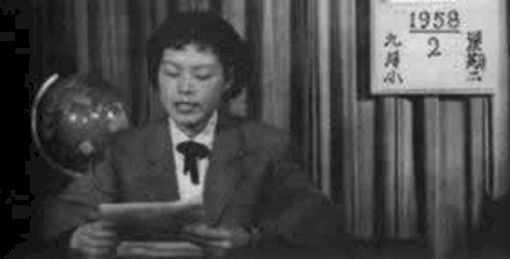 Bild: Das “Peking Fernsehen” begann mit dem regulären Fernsehdienst am 2. September 1958. Beachte das noch handgeschriebene Kalenderblatt rechts im Bild. (Bildnachweis 2)
Mit 1. Jänner 1960 führte Peking Fernsehen ein neues Programmschema ein, dass die wöchentliche Programmzeit auf acht Stunden erhöhte einschließlich einem Ganztagesprogramm am Sonntag mit einem Duzend fester Programm Kolumnen.
Das neue Pekinger Fernsehstudiogebäude mit 600 m² Fläche beinhaltete drei Fernsehstudios, einen Kinosaal und zwei Regieräume und war mit Mai 1960 bezugsfertig.
Dieses neue Gebäude verbesserte die Entwicklung des Peking Fernsehens außerordentlich.
Der 1. Mai 1978 brachte dann die offizielle Umbenennung des Peking Fernsehens in „China Central Television Station“, kurz CCTV, veranlasst durch das Zentral Komitee der Kommunistischen Partei Chinas.
 Bild: Frühe Studioaufnahme des CCTV Nachrichten Senders (Bildnachweis 3)
China’s erste Fernsehempfangsgeräte
Das Modell Peking 820
China’s erster Fernsehapparat ist der „Peking 820“, ein 34 cm/ 14 Zoll schwarz/weiß Röhren Fernsehgerät mit CCIR Norm B VHF Tuner mit chinesischem Raster. Hergestellt vom Tianjin Funkwerk am 17. März 1958.
Als 1957 das Zentral Komitee der Kommunistischen Partei China’s den Start des Fernsehdienstes anordnete wies das Ministerium der 2. Mechanischen Industrie der Pekinger Rundfunkausrüstungsfabrik die Fertigung von Fernseh Sendeausrüstung zu, während dem Tianjin Funkwerk die Herstellung von Fernsehempfangsgeräten zugewiesen wurde.
Das Tianjin Funkwerk stellte ein Ingeneutteam aus acht Mitgliedern für das Fernsehprojekt zusammen und bestimmte Herrn Huang Shiji als Chefingenieur.
Das Ingenieurteam kaufte verschiedene sowjetische Fernsehempfänger und studierte deren Schaltung.
Sie entschieden sich für das sowjetische Radio Fernsehkombigerätemodel „XXXX“ (möglicherweise Serie "START") als Muster und bestückten es mit Röhren aus chinesischer Produktion.
Der Prototyp war Mitte März 1958 fertig und bestand in der Nacht des 17. März 1958 den Empfangstest.
Das Testprogramm der Pekinger Fernsehstation wurde mit klarem Bild und Ton empfangen vergleichbar mit den sowjetischen Referenzempfängern. Damit war der erste chinesische Fernsehempfänger geboren.
 Bild: China’s erster Fernsehapparat ist der „Peking 820“, ein 34 cm/ 14 Zoll schwarz/weiß Röhren Fernsehgerät (Bildnachweis 4)
Das Modell Shanghai 101 Im April 1958 wurde der Shanghai Rundfunkausrüstungsfabrik die Herstellung von Fernsehgeräten in Shanghai zugewiesen. Das Werk stellte ein Team aus sechs Ingenieuren zusammen denen Chefingenieur Herr Zhou Shu vorstand.
Das Team begab sich zum Tianjin Funkwerk um die Arbeiten am Peking 820 Projekt zu untersuchen und brachten technisches Material und Meßausrüstung zurück.
Die Gestaltung und der Zusammenbau benötigte zwei Monate bis am 22. Juli 1958 zwei Prototypen fertig gestellt waren die eine Reihe von geometrischen Testbildern von der „Zentralen Rundfunkstation“ empfingen aber noch nicht die volle Kompatibilität zu den technischen Spezifikationen eingehalten haben.
Es folgten technische Modifikationen durch das Ingenieurteam und erneute Tests am 24. Juli 1958 deren erfüllte Meßwerte sogar die der Referenzschaltung übertrafen.
Bild: Erster in Shanghai hergestellter Fernsehapparat. Der Shanghai 101, ein 44 cm 17 Zoll schwarz/weiß Röhrenempfänger;
Übersetzt aus dem Englischen am 3. Juni 2010 von Fernsehhistoriker Wolfgang Scheida /Wien Der Originaltext stammt von unserem chinesischen RM.org Sammlerkollegen Mr. „Jack“ Songping Wan. Hinweis: Mit obigen Stichtag ist eine inhaltliche Prüfung der Daten und der Chronik durch den Übersetzer noch NICHT erfolgt! Allgemein: Chinesische Fachmagazine & Literatur mit der Fachleuten auch die Technik des Fernsehens nähergebracht wurde
|
|
Vus: 9772 Répondre: 2
Radio literature for the People's Republic of China (PRC)
|
|
|
Ernst Erb
25.May.10 |
1
China had a radio industry well before the Second World War, since first transmissions were started in 1923. At that time many sets have been imported, mainly from the USA or were hand made sets. But soon the own production started in small scales. |
|
Ernst Erb
25.May.10 |
2
Transistor Radio Manual 1982 - see the content pages as attachment. Pièces jointes
|
|
Wolfgang Scheida
26.May.10 |
3
Chinese radio related literature and magazines: All kind of electronic related topics have been covered by the following Chinese magazines from the late 1940's up to the end of the 1990's: Wireless, Radio, Television, Radar, computer, calculators, remote controls, electronic education, early export models, military technique, electricity, space science & satellites, telephone, electronic components, PA systems, link systems,.... The titels are:
W.S. 5/2010 |
Fin des contributions forum pour ce pays
| Mentions légales | Plus d'informations |


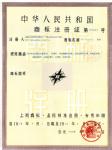

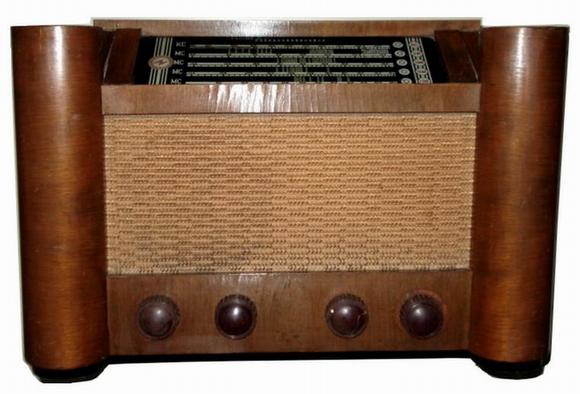

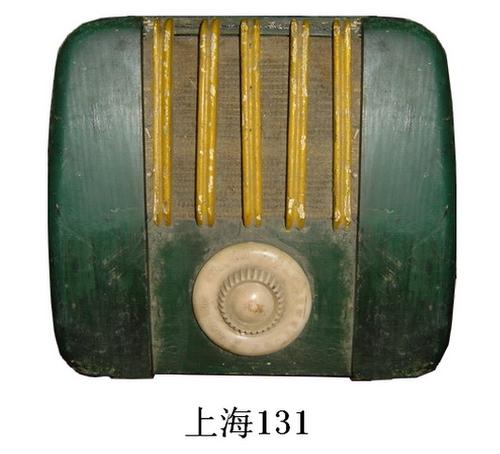
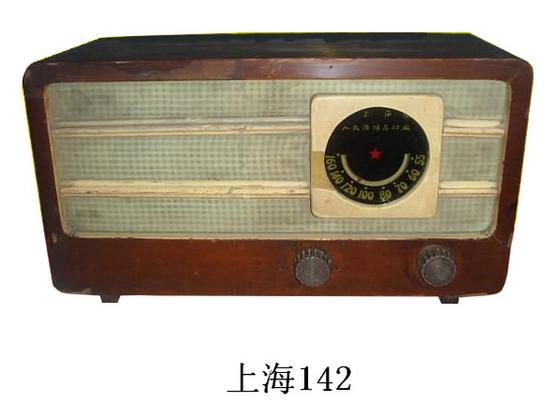
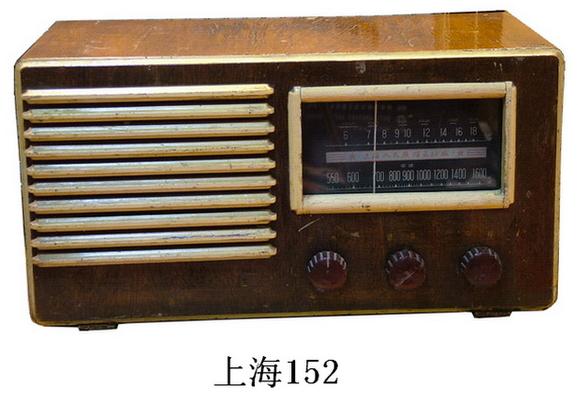
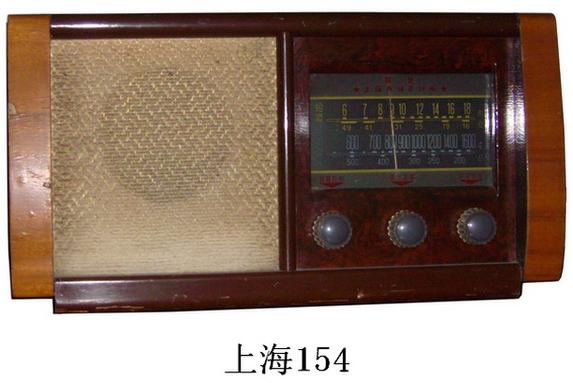
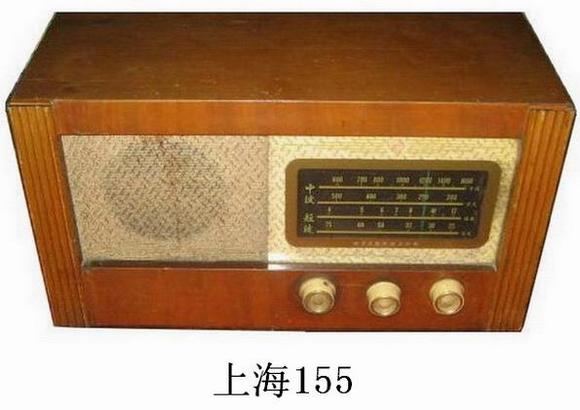
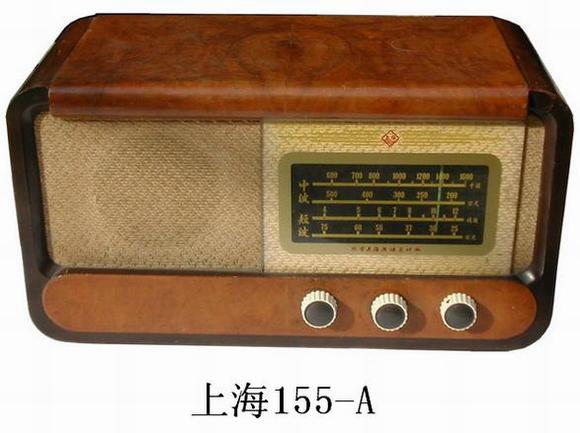




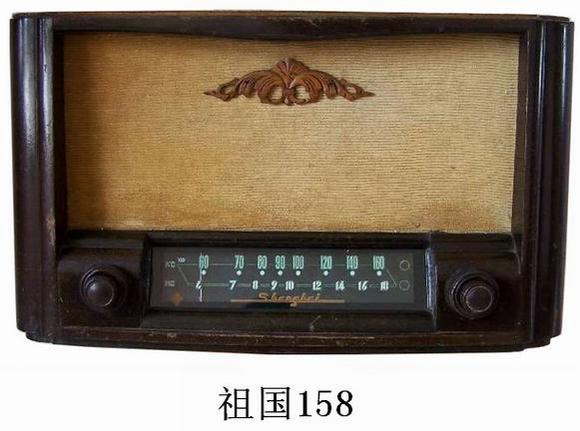
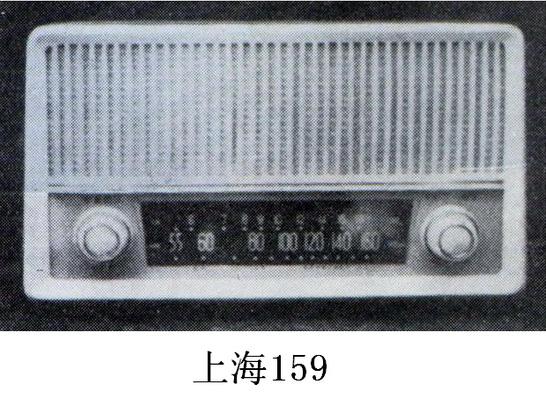
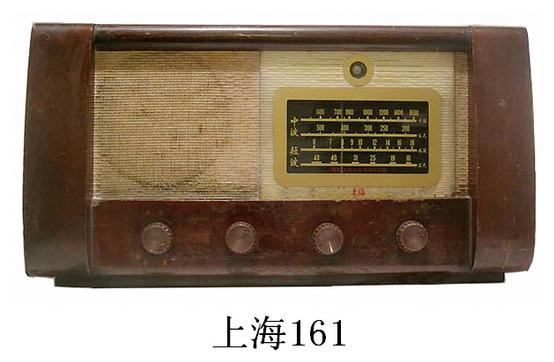
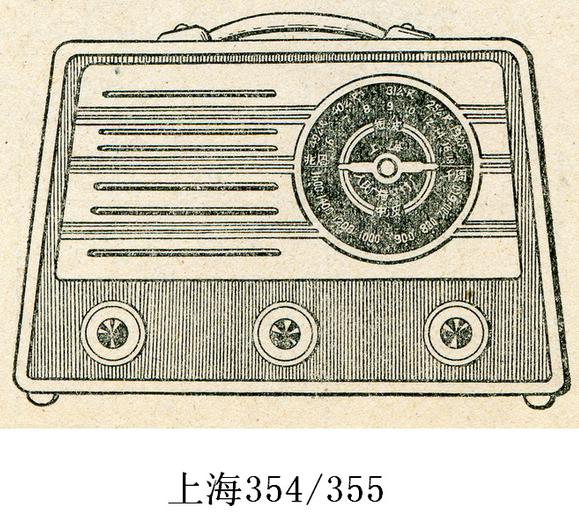
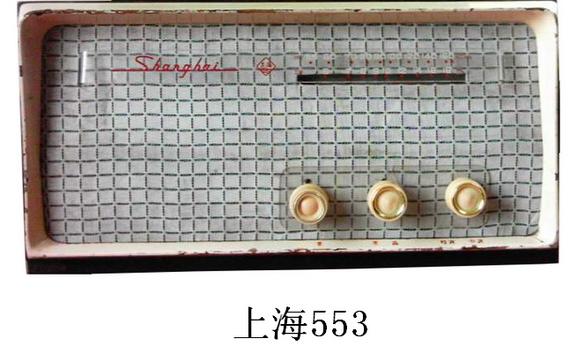
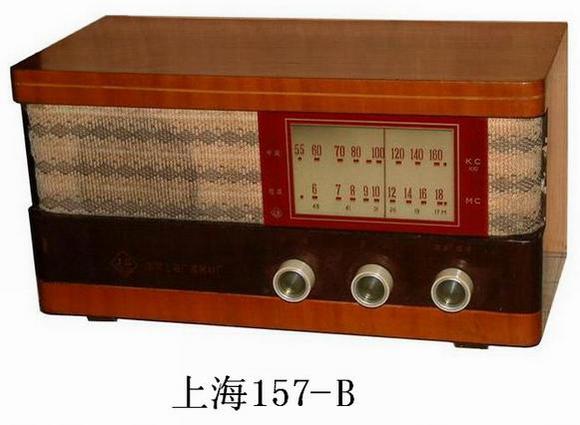
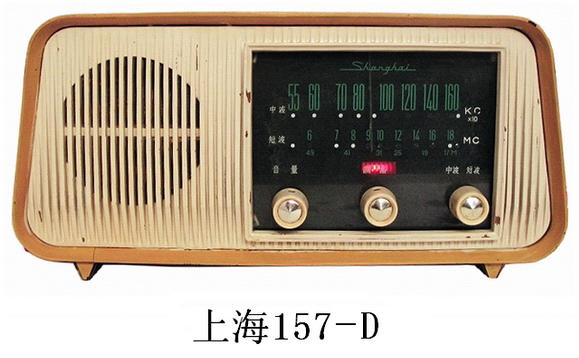
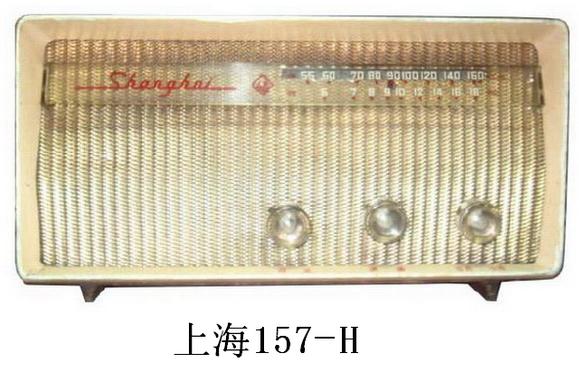
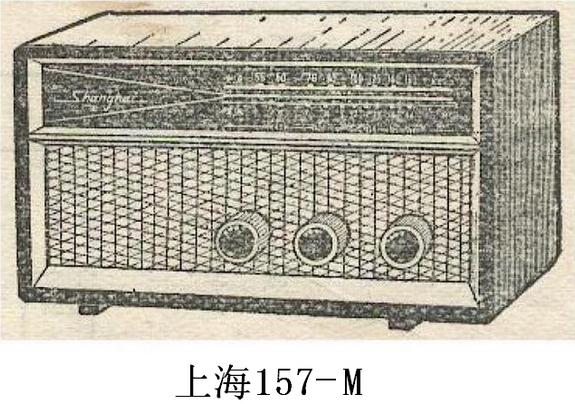
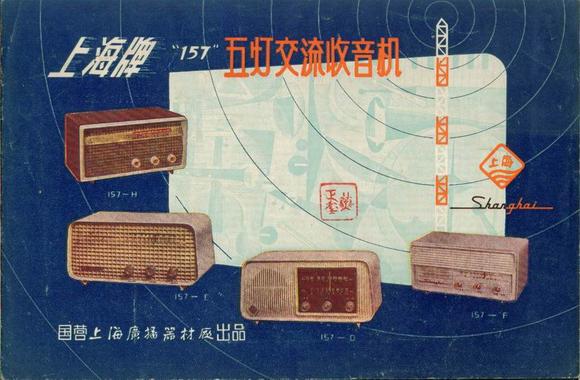
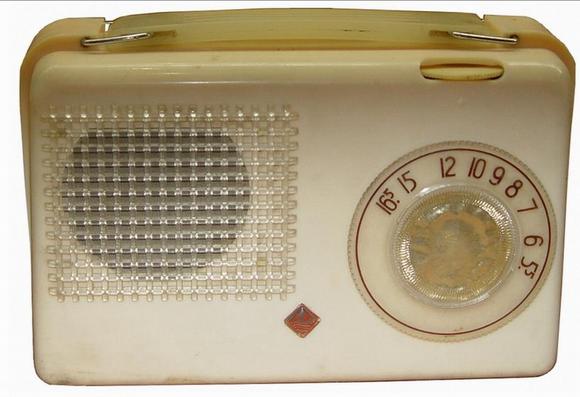
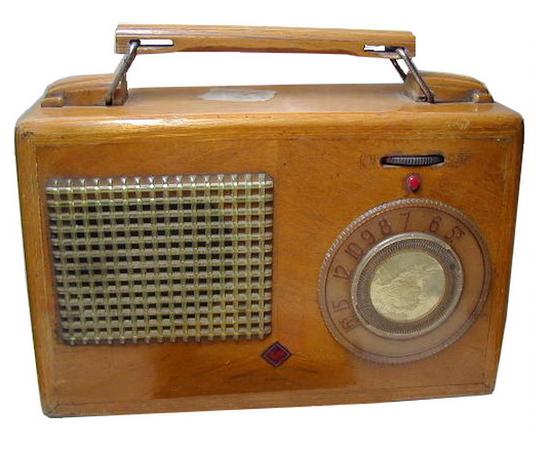

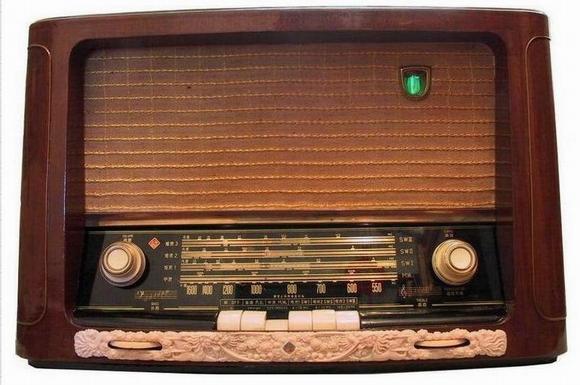
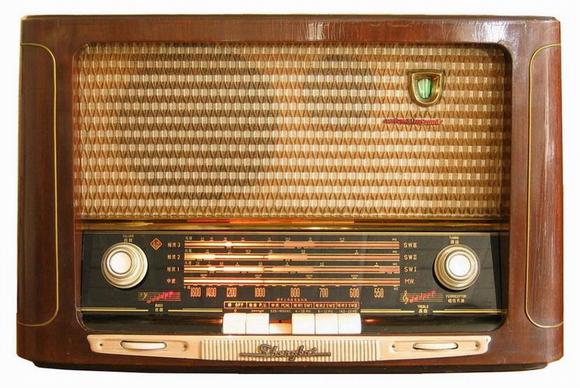 Shanghai 131 (Different Design)
Shanghai 131 (Different Design)